Rob Bignell's Blog, page 375
April 15, 2013
Use bait-and-switch device carefully in stories
One common 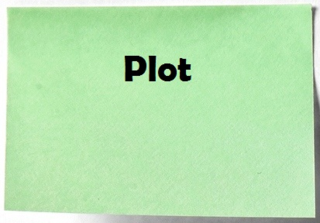 and time-honored way to make your plot more interesting is to employ a bait-and-switch device.
and time-honored way to make your plot more interesting is to employ a bait-and-switch device.
This occurs when the author guides and encourages readers to invest their attention in some suspenseful situation but then is substitute for a payoff that has little to do with what occurred before. Getting readers to invest their attention is the bait; substituting a payoff is the switch.
Examples of this frequently occur in literature of all stripes, usually as minor plot twists and in comedic scenes. However, mystery and detective stories often are entirely built around this device as the author wants to surprise readers with who really committed the crime at the story’s climax.
Sometimes in literature, this term refers to a point of view cut so that the expected climax is unresolved and left to the reader’s imagination. This frequently occurs in dark stories.
In either case, you should not haphazardly use the device. Done poorly, it leads to disjointed storytelling, and you risk leaving the reader feeling vaguely unfulfilled.
Need an editor? Having your book, business document or academic paper proofread or edited before submitting it can prove invaluable. In an economic climate where you face heavy competition, your writing needs a second eye to give you the edge. I can provide that second eye.
Related articles
 How to form your story's basic structure
How to form your story's basic structure Avoid exposition (Show, don't tell!)
Avoid exposition (Show, don't tell!)
April 14, 2013
Editor’s latest book now out in paperback
My latest 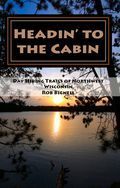 book, “Headin’ to the Cabin: Day Hiking Trails of Northwest Wisconsin” is now available in paperback. Describing more than 100 trails, the book tells where you can walk across 1.2 billion-year-old rock, dip your toes in the world’s largest freshwater lake, tramp along the same routes that the first European explorers bushwhacked during the 1600s, and see the fourth highest waterfall east of the Rockies. It’s the indispensable hiking guide to anyone who owns or rents a cabin in Ashland, Barron, Bayfield, Burnett, Douglas, Polk, St. Croix, Sawyer and Washburn counties. It’s also available as an ebook on Kindle and soon on Nook, iBook, Sony Reader and other ereaders.
book, “Headin’ to the Cabin: Day Hiking Trails of Northwest Wisconsin” is now available in paperback. Describing more than 100 trails, the book tells where you can walk across 1.2 billion-year-old rock, dip your toes in the world’s largest freshwater lake, tramp along the same routes that the first European explorers bushwhacked during the 1600s, and see the fourth highest waterfall east of the Rockies. It’s the indispensable hiking guide to anyone who owns or rents a cabin in Ashland, Barron, Bayfield, Burnett, Douglas, Polk, St. Croix, Sawyer and Washburn counties. It’s also available as an ebook on Kindle and soon on Nook, iBook, Sony Reader and other ereaders.
Need an editor? Having your book, business document or academic paper proofread or edited before submitting it can prove invaluable. In an economic climate where you face heavy competition, your writing needs a second eye to give you the edge. I can provide that second eye.
Related articles
 Editor's latest hiking guidebook now out
Editor's latest hiking guidebook now out
April 13, 2013
Improve your writing by modeling fave authors
Looking for 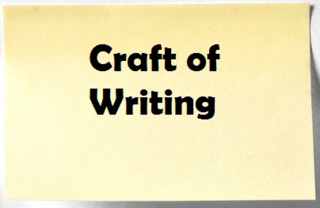 a way to hone your writing skills? Try drawing inspiration from your favorite authors’ writing.
a way to hone your writing skills? Try drawing inspiration from your favorite authors’ writing.
To some degree, you’re probably already doing this. Our perception of what makes good writing often is based on who we consider to be a good writer. If you idolize Hemingway, you’ll probably think good writing means short, almost staccato sentences.
There’s certainly value in reading and consciously drawing inspiration from the authors you like. After all, they’re probably among the best in their genre, so they must be doing something right (no pun intended). For beginning writers, modeling the stories of a favorite author forces them to think about how a story is structured and the characters developed, making writing of their own stories easier later on.
Having said this, you don’t want to imitate a loved author’s style. Instead, respond to his style, to his content. By copying someone else’s style and voice, you deny your own. You physically and mentally aren’t Arthur C. Clarke, so at best you only can create a facsimile of his approach to storytelling. The story will ring as false to the reader.
By responding to a favorite author’s style and content, however, you acknowledge his influence while remaining true to your own voice. As you are presenting the story from your world view, you’ve peeled away a level of artificiality (the using of another writer’s voice to tell your story). You then become part of an ongoing commentary of all that ever has been written in that genre.
If you really want to learn from your favorite author how writing works, read his inspirations. You’ll be surprised how his best stories don’t copy those inspirations but instead was spurred by them to great creativity.
Need an editor? Having your book, business document or academic paper proofread or edited before submitting it can prove invaluable. In an economic climate where you face heavy competition, your writing needs a second eye to give you the edge. I can provide that second eye.
Related articles
 Five Great Quotations for Aspiring Writers
Five Great Quotations for Aspiring Writers
April 12, 2013
Market your book with a free unpublished story
When promoting your book, you always should have a website, send out press releases to bloggers and mainstream media, and arrange book readings/signings to ensure the title is properly promoted. But those aren’t the only things you can do. In fact, they may not be enough.
promoting your book, you always should have a website, send out press releases to bloggers and mainstream media, and arrange book readings/signings to ensure the title is properly promoted. But those aren’t the only things you can do. In fact, they may not be enough.
A great way to attract readers to your book’s website is to offer on it free samples of your unpublished writing. For example, a novelist might include a short story or novella they’ve written but have been unable to find a home for. This offers a double benefit: You’re not giving away the book you want to sell, and readers get to sample your writing style while meeting your characters. Particularly effective for fiction writers is offering a backstory or prequel to your published novel, writing a short story about what occurred to your characters between two novels, or providing a story about an interesting secondary character who appeared in one of your published books.
Need an editor? Having your book, business document or academic paper proofread or edited before submitting it can prove invaluable. In an economic climate where you face heavy competition, your writing needs a second eye to give you the edge. I can provide that second eye.
Related articles
 Where to find reviewers for your book
Where to find reviewers for your book Market your book with endorsements
Market your book with endorsements Market your book with a free unpublished story
Market your book with a free unpublished story Editor's '7 Minutes a Day...' writing guides on sale
Editor's '7 Minutes a Day...' writing guides on sale Write a winning blurb for your book's back cover
Write a winning blurb for your book's back cover
April 11, 2013
To self-publish or not to self-publish?
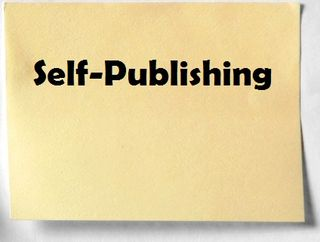 my favorite Christmas presents ever given to me came from a classmate during our fifth grade Secret Santa exchange. She knew I liked to write stories and so give me a wonderful mini-printing press kit in which I could punch out little rubber letters and arrange them in words and sentences on tiny bars. Press the bar into the accompanying ink pad, and viola! I was a published author. Finally, I could get my stories “printed”!
my favorite Christmas presents ever given to me came from a classmate during our fifth grade Secret Santa exchange. She knew I liked to write stories and so give me a wonderful mini-printing press kit in which I could punch out little rubber letters and arrange them in words and sentences on tiny bars. Press the bar into the accompanying ink pad, and viola! I was a published author. Finally, I could get my stories “printed”! The kit unfortunately didn’t work too well. The letters usually didn’t stay in the tiny bars, and after the first use the ink tended to smudge when pressed on paper. In addition, lining up all of those letters backward so they would look right on paper proved too time-consuming for this 11-year-old to handle. Still, the thought alone made it among the best of many presents given to me over the years.
Thirty years later, printing our own short stories is a lot simpler than that dollar printing press toy my classmate gave me. Thanks to computer technology, anyone now can get their book printed, and it’s fairly instant at that. But not that many writers really understand self-publishing or how to get it done all on their own at virtually no cost.
Self-publishing is the publication of a book (or any other media, but we’ll concentrate on books in this volume) by the author without using a traditional publishing company. It’s also known as print on demand, because typically a self-publishing company doesn’t print large numbers of books to be warehoused but prints them as they are ordered.
Self-publishing is not a vanity press, though some critics denounce it as such. A vanity press typically involves your poem or story being accepted for publication not because it has any merits but because the publisher thinks you’ll then purchase the book containing the piece. Or perhaps the publisher sells other “services” to you that come with the publication of your piece. In self-publishing, the author often is the publisher. Anyone who owns or has ever owned a printing press – such as Ben Franklin in colonial America – is self-publishing if they print their own thoughts and writings. With modern technology, anyone can be their own publisher.
Ever since the invention of the printing press until the past decade or so, the way to get your book printed was through what has become known as mainstream publishing. This system typically involved having a literary agent sell your book to large company that edited, designed a cover for, printed, distributed and marketed it for you. Unfortunately, especially in the tough economic times of the past years, mainstream publishing houses have cut back the number of titles they sell and distribute. The result is that they reject too many great books, spend too little money spent promoting books that are accepted, and return too small a chunk of the revenues to the author.
The answer for many a jilted author has been to self-publish. During 2011, an incredible 1,185,445 books were self-published, according to Bowker. And what is being self-published are hardly novels by unknown writers or nonfiction texts on some obscure subject. In addition to paper books, self-publishing includes eBooks, photo books, calendars, cookbooks, poetry, educational materials and more. The number of materials that will be self-self-published undoubtedly will grow in the years ahead.
There are a lot of good reasons to self-publish besides that mainstream publishing has shut its door to most authors. Not notable is the high royalty that can come back to you. With a mainstream publisher, you’re lucky to make a dime for every dollar of books sold. Up to 70 cents for every dollar can come to you, though, if you self-publish. Another good reason to self-publish is that it’s quick. Within a few hours, your book can be available for sale to the public when you self-publish. Mainstream publishing may require months from the time you complete a manuscript to its appearance on bookstore shelves. In addition, you instantly can sell your book across the globe when self-publishing. Expect several more months and attorneys to be involved with global distribution and sales if you go the mainstream publishing route.
Need an editor?
Having your book, website, business document or academic paper proofread or edited before submitting it can prove invaluable. In an economic climate where you face heavy competition, your writing needs a second eye to give you the edge. I can provide that second eye.
Related articles
 Do you need extra services a P.O.D. house offers?
Do you need extra services a P.O.D. house offers? Self-publishing book receives good reviews
Self-publishing book receives good reviews Design a back cover that sells your book
Design a back cover that sells your book
April 10, 2013
Clearing this up: Sight vs. site
If you want readers to see where you’re going in a story, you’ll want to get these two words right.
“Sight” is what you see, as in Watching the flying saucer land was the strangest sight he’d ever seen.
“Site” is a location, as in The landing site was in a secluded, wooded area.
Need an editor? Having your book, business document or academic paper proofread or edited before submitting it can prove invaluable. In an economic climate where you face heavy competition, your writing needs a second eye to give you the edge. I can provide that second eye.
Related articles
 Nothing to joke about: Blonde vs. blond
Nothing to joke about: Blonde vs. blond When to use affect vs. effect
When to use affect vs. effect Get it right: Its vs. it's
Get it right: Its vs. it's Improve writing's texture by avoiding repetition
Improve writing's texture by avoiding repetition '7 Minutes a Day' now available in paperback!
'7 Minutes a Day' now available in paperback!
April 9, 2013
Avoid 'As you know' Syndrome in fiction
Whatever you do, avoid embedding exposition by having one character say to another, “As you know …” This is commonly given in science fiction stories by a “Stapledon”, which is a character who gives us an info dump, usually one at great length and without interruption (The term is ignominiously pays homage to science fiction writer Olaf Stapledon, who regularly made use of this technique.). It’s an obvious info dump and immediately flags to the reader that the forward movement of plot is about to be slowed, that he is about to be lectured and the viewpoint may be violated. As award-winning science fiction editor Gardner Dozois said of the Stapledon, “That’s probably the most common beginner’s mistake …”
Need an editor? Having your book, business document or academic paper proofread or edited before submitting it can prove invaluable. In an economic climate where you face heavy competition, your writing needs a second eye to give you the edge. I can provide that second eye.
Related articles
 Avoid exposition (Show, don't tell!)
Avoid exposition (Show, don't tell!) Avoid giving readers a big info dump
Avoid giving readers a big info dump Editing client publishes science fiction story
Editing client publishes science fiction story
April 7, 2013
Editor's latest hiking guidebook now out
My latest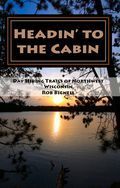
book, Headin’ to the Cabin: Day Hiking Trails of Northwest Wisconsin is now available on Kindle. Describing more than 100 trails, the book tells where you can walk across 1.2 billion-year-old rock, dip your toes in the world’s largest freshwater lake, tramp along the same routes that the first European explorers bushwhacked during the 1600s, and see the fourth highest waterfall east of the Rockies. It’s the indispensable hiking guide to anyone who owns or rents a cabin in Ashland, Barron, Bayfield, Burnett, Douglas, Polk, St. Croix, Sawyer and Washburn counties. It’ll be out in paperback within a week.
Need an editor? Having your book, business document or academic paper proofread or edited before submitting it can prove invaluable. In an economic climate where you face heavy competition, your writing needs a second eye to give you the edge. I can provide that second eye.
Related articles
 Five great quotations about word choice
Five great quotations about word choice
The ‘thinking step’ when writing your book
If you’re  putting your pen to paper or fingers to keyboard for the first time on a story, you really aren’t starting at all. You probably “started” writing the piece some time before – in your head.
putting your pen to paper or fingers to keyboard for the first time on a story, you really aren’t starting at all. You probably “started” writing the piece some time before – in your head.
That “thinking step” is known in the writing process as brainstorming. It is where you come up with the idea for the story; it is that first mad scribble of notes about your characters, their conflicts, the setting the story will occur, a catchy title and more.
There is no magical answer for making the muse bless you with inspiration. It varies greatly, even for authors in the same genre. Some writers only can create when stress free. Others need to be in a tumultuous environment. Some need to delve into good books, examine great art, and listen to fine music. Others need a blank, almost sterile room so their mind can focus.
Regardless, once inspiration does strike, you’re ready to brainstorm. In fact, you’ll probably just do it naturally (and usually when there’s no pen or paper handy!)
The biggest challenge facing you when brainstorming is to prevent your self-doubts from hindering your creativity.
Don’t tell yourself it’s a lousy story idea. It may indeed be lousy, but by allowing yourself to explore the possibilities, you may come upon an idea that’s pretty darn good. Be curious not critical. Criticism comes later when you start outlining your work (which is the next step in the writing process) through the revising of it.
In addition to generating your idea, brainstorming can involve collection of information to help you formulate your story idea. If it involves a historical romance set in the beginning of the Roman Empire, you may want to read about the time of Caesar and Augustus. This likely will spur further ideas about your book, perhaps even whole scenes.
In many ways, the brainstorming portion of the writing process is the most fun. It’s a time when you let your mind dream freely and your visions soar, leaving practical questions like “Who is my reader?” (which could alter the plotting and style of your book) for later stages.
Need an editor? Having your book, business document or academic paper proofread or edited before submitting it can prove invaluable. In an economic climate where you face heavy competition, your writing needs a second eye to give you the edge. I can provide that second eye.
Related articles
 The 'thinking step' when writing your book
The 'thinking step' when writing your book When exposition is necessary in a story
When exposition is necessary in a story Five quotations about writing as self-discovery
Five quotations about writing as self-discovery '7 Minutes a Day' now available in paperback!
'7 Minutes a Day' now available in paperback!
April 6, 2013
Five great quotations about word choice
“Don’t use words too big for the subject. Don’t say ‘infinitely’ when you mean ‘very’; otherwise you'll have no word left when you want to talk about something really infinite.” – C. S. Lewis
“Any word you have to hunt for in a thesaurus is the wrong word. There are no exceptions to this rule.” – Stephen King
“A word is not the same with one writer as with another. One tears it from his guts. The other pulls it out of his overcoat pocket.” – Charles Peguy
“The difference between the almost right word and the right word is really a large matter – it’s the difference between the lightning bug and the lightning.” – Mark Twain
“To me, the greatest pleasure of writing is not what it’s about, but the inner music the words make.” –
Need an editor? Having your book, business document or academic paper proofread or edited before submitting it can prove invaluable. In an economic climate where you face heavy competition, your writing needs a second eye to give you the edge. I can provide that second eye.
Related articles
 Improve writing's texture by avoiding repetition
Improve writing's texture by avoiding repetition Five great quotations about fiction
Five great quotations about fiction Five great quotations about novel writing
Five great quotations about novel writing Five great quotations about writing style
Five great quotations about writing style Five Great Quotations for Aspiring Writers
Five Great Quotations for Aspiring Writers



